Don't wanna be here? Send us removal request.
Photo




SPIDERMAN: BLUE (2002-2003)
I guess when i try to sum up how i get- how i feel sometimes around this time of year…i feel blue. Not like i’ve been dipped in with the tidy bowl man, but like in music, in jazz…in feeling blue. And i long for a time when a girl i knew with an incredible smile and so much good in her heart made me think…life can be great.
348 notes
·
View notes
Text
The Amazing Spider-Man and the presence of the bridge
The thing about the Amazing Spider-Man films is that they’re a two-part adaptation of The Night Gwen Stacy Died (Amazing Spider-Man #121-122). It’s just what they are, no point in arguing that – Webb’s stated in interviews that it was the story he set out to tell from the beginning. All the beats are there leading up to Gwen’s death: the death of George Stacy, his message to Peter changing with the times: in the comics, George Stacy tells Peter to take care of Gwen, whereas the movies exist in a world where Gwen Stacy has been famously dead in popular culture for decades, hence, George tells Peter to stay away from her instead. Gwen’s “I’m moving to England” is a reference to the period of comics before her death where she went to England to stay with her uncle, George Stacy, appropriately updated for modern times.
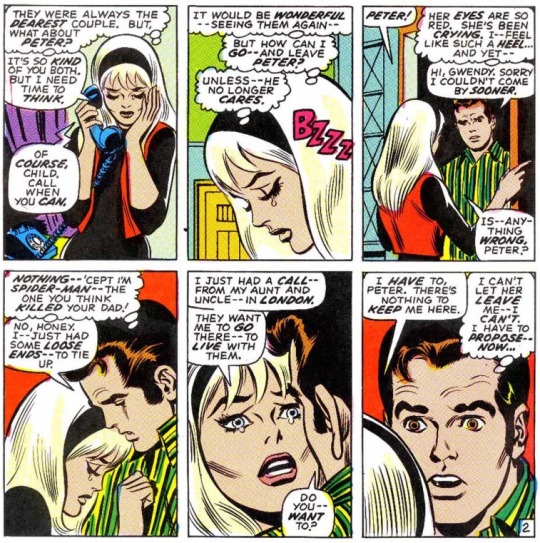
(Amazing Spider-Man #93)
Certain Peter and Gwen panels from the comics are even duplicated near identically for the screen:
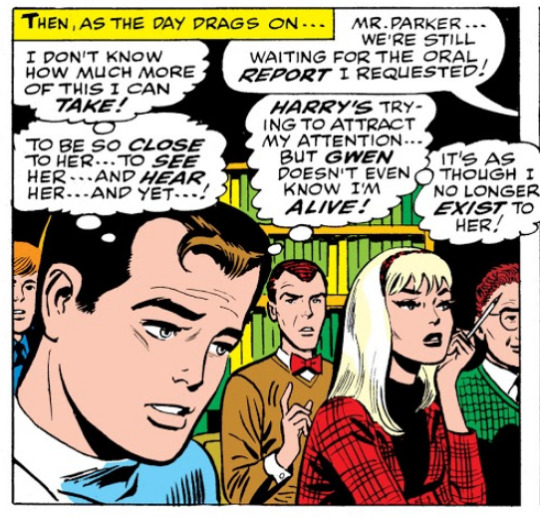
(Amazing Spider-Man #63)
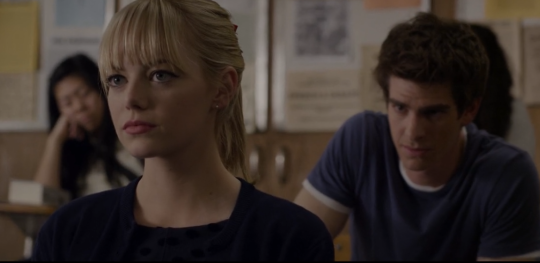
(The Amazing Spider-Man (2012))
But I think the most important comics reference in the films is, ultimately, the presence of the bridge. It’s a well-known fact that in Amazing Spider-Man #121, Gwen Stacy dies when she plummets from either the George Washington or the Brooklyn bridge, depending on which comic you’re referencing; when Peter attempts to catch her with his webbing, the whiplash snaps her neck, a devastating moment recreating in The Amazing Spider-Man 2 (2014) when the back of Gwen’s head meets the ground with a sickening crack, caught seconds too late by Peter’s webbing.
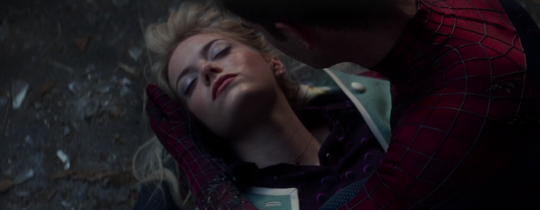
(The Amazing Spider-Man 2 (2014))
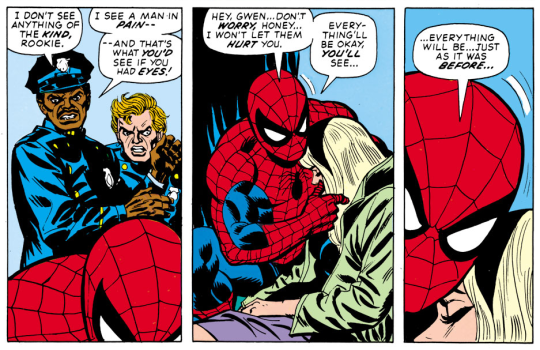
(Amazing Spider-Man #122)
The big departure in Gwen’s death scene, of course, is that in The Amazing Spider-Man 2, Gwen doesn’t die on the bridge but rather in a clock tower, which is, in and of itself, a reference back to the period of comics shortly before her death, as Big Ben notably appears in an action scene in Amazing Spider-Man #95. And I love Webb’s commentary on Gwen’s death scene in the movie and the decision to use the clock tower here:

“His inability, despite his enormous efforts, to stop time.” (x)
But as much as I like the symbolism of the clock tower and as much as it is a departure from the comics in terms of scenery, there’s one thing that strikes me as someone who has watched these movies sixty million times: the omnipresence of the bridge itself, the original symbol of Gwen’s death, within the films. In comics, the bridge haunts Peter. He leaves roses there for Gwen on Valentine’s Day in Spider-Man: Blue. In Spider-Man & Black Cat: Evil That Men Do, the sight of a supposed bad guy standing with his ex-girlfriend Felicia Hardy on a bridge is enough to send him into a rage-filled frenzy, flashing back to what happened to Gwen:
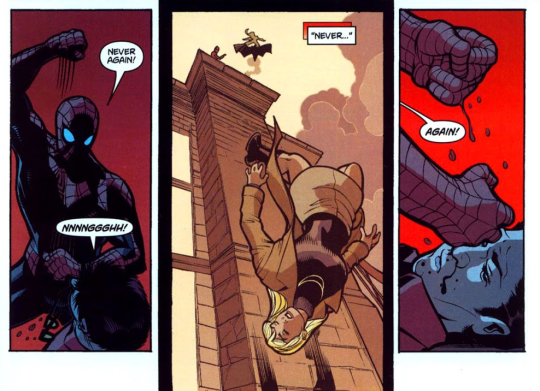
The bridge is one of the most powerful objects in Spider-Man mythology. Even though in the The Amazing Spider-Man 2 Gwen doesn’t die on the bridge in what would become, however unintentionally, the end of the franchise, the bridge looms like a warning in The Amazing Spider-Man films from the very beginning. When Richard and Mary Parker flee their home at the very beginning of the first film, on their way to leave a young Peter with Uncle Ben and Aunt May in Queens, a bridge is visible in the shot:
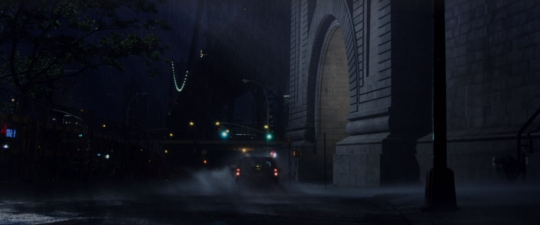
Furthermore, and perhaps most importantly, Uncle Ben himself is employed working on bridges. The film’s prequel comic is what directly establishes this:
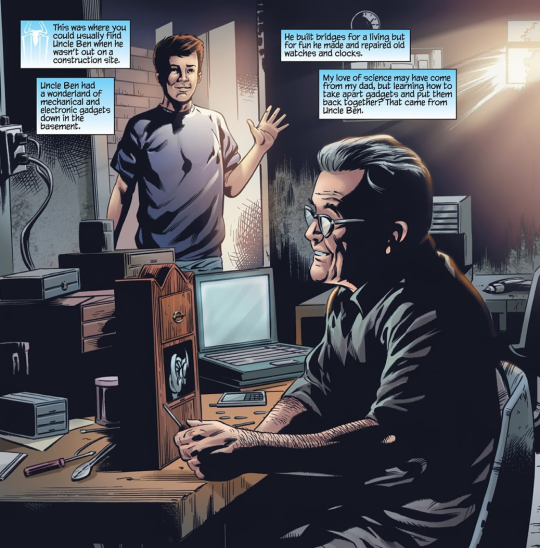
“He built bridges for a living.”
But even discounting the prequel comic and relying on the movie on its own, this information delivered directly to the audience through its incredibly detailed sets. It’s clear with a little poking around and some guess work what it is that Uncle Ben, a thoroughly blue collar character in the films, does. There’s an international association of iron workers magnet on the fridge in the Parker home:
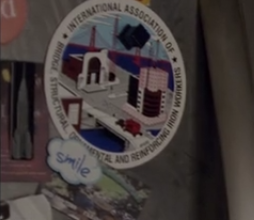
May, who we know in the film works as a waitress and then later a nurse, wears a shirt that says United Bridgeworkers:
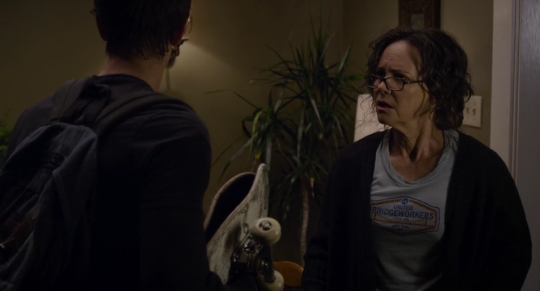
And then, perhaps most importantly, in the scene where Ben confronts Peter and delivers his speech about Richard Parker’s moral code, the film’s rewording of “with great power comes great responsibility” that frames that responsibility as “a moral obligation”, there are bridge models on the mantel behind Aunt May:
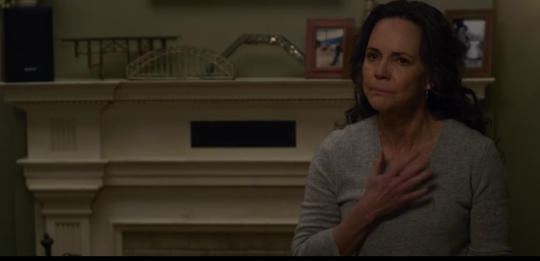
This has always struck me as notable because, while they’re clearly bridge models when you look closely, the sculptures could very easily also be modern Menorahs. Andrew Garfield, who openly identifies as Jewish, has gone on the record stating that he recognized that same Judaism within Peter Parker and within Spider-Man mythos. The bridge looms large, and it serves multiple purposes.
The Parker household isn’t the end of the bridge’s presence within the film, either. The scene wherein Peter recognizes Spider-Man’s greater importance – his own greater responsibility – and where he consciously chooses to put aside his personal vendetta for Uncle Ben’s killer and instead dedicate Spider-Man to a greater responsibility and to helping others who need him and his greater power, takes place on a bridge:
youtube
This is a hugely impactful moment in the film – in fact, it’s the first scene where Peter names himself as Spider-Man. His very identity and self-actualization is linked to this moment – a moment that happens on a bridge.
Then there’s the night of Gwen’s death in The Amazing Spider-Man 2. While Gwen doesn’t die on a bridge, very shortly before her death, during her big romantic reunion with Peter where he declares that’s she’s his path and says he’ll follow her to England, they stand on a bridge. Leading up to this, Peter webs “I Love You” over a bridge. The bridge is always there, waiting, a silent participant in the events leading up to Gwen’s death.
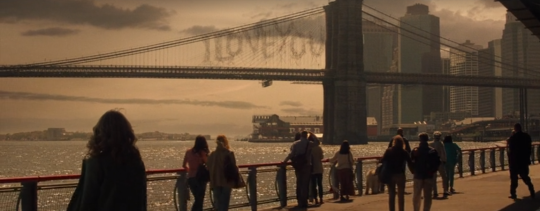
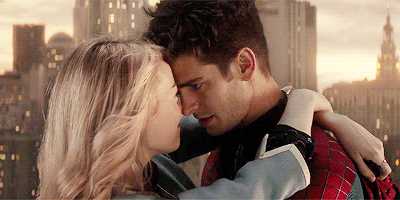
The bridge looms, ever present, in and of itself a greater symbol of the connection between life and death, warning the viewer of Gwen’s death. It’s even present in Peter’s room in the second movie, replacing the Rear Window poster of the first film with a print:
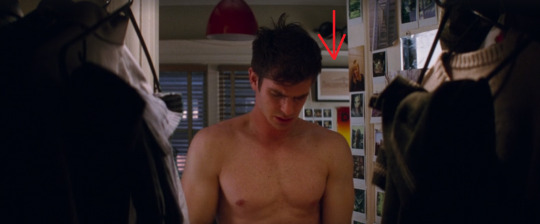
It’s that kind of attention to detail and commitment to the story they’re telling that renders the Amazing Spider-Man films my favorite live action Spider-Man movies.
375 notes
·
View notes
Photo



Justin’s old Housekeeper Tatiana Voziuk talks about Selena and Justin’s relationship (January 26, 2014)
44 notes
·
View notes
Photo




Justin and Selena spending Justin’s 16th Birthday Party (March 1, 2010)
63 notes
·
View notes
Photo



Justin and Selena shopping at Louis Vuitton’s store in Paris, France (November 9, 2011)
9 notes
·
View notes
Photo










Justin and Selena shopping at Louis Vuitton’s store in Paris, France (November 9, 2011)
10 notes
·
View notes
Photo

Oh ho, the mistletoe hung where you can see Somebody waits for you, kiss her once for me
648 notes
·
View notes
Photo

this is how life strikes, this is what it feels like
336 notes
·
View notes
Photo




Remember what it feels like. All of those times in school when you see him standing down the hall, and you cannot breathe until you’re with him. Or those times in class when you - you can’t stop looking at the clock because you know that he’s standing right out there waiting for you. Don’t you remember what that’s like? 🎶
1K notes
·
View notes
Photo

No one can convince me that after Scott healed and they knew they won, Stiles and Lydia didn’t go back to Stiles’s house and just stand like this together in his room for like thirty minutes
377 notes
·
View notes
Photo

You’ve been right every time something like this has happened, so don’t start doubting yourself now
387 notes
·
View notes



















